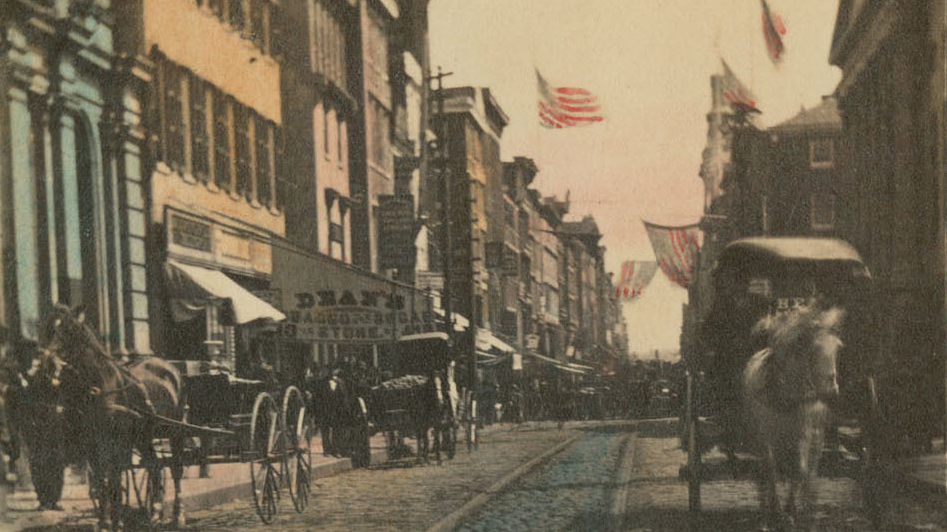Painted transparencies were the lighted billboards of the nineteenth century. Large scenes and words painted on thin cloth or paper were stretched over a wood frame, like a canvas painting, and illuminated from behind. The painted surfaces were protected with several coats of varnish. The effect would have been like a glowing painting in a dark street at night. These were ephemeral objects, deteriorating rapidly outdoors. They were like elaborate party decorations, created for special occasions, parades, public events, or political promotions. By the 1860s, painted transparencies had been around for hundreds of years.
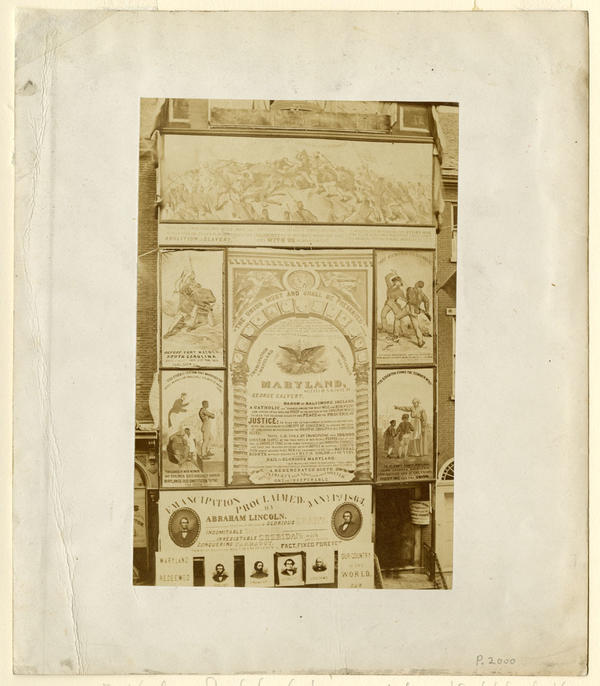
During the Civil War in Philadelphia, this image from the Library Company of Philadelphia shows the use of painted transparencies as wartime propaganda. The photo shows an entire rowhouse at 1210 Chestnut Street covered with transparencies sometime after October 1864. This was the date that Maryland approved a new state constitution abolishing slavery. Note the large central panel with the archway and the “Maryland Redeemed” sign bottom left. The entire ensemble decorated the façade of the Supervisory Committee for Recruiting Colored Troops, and it was intended to inspire Black men to enlist in the Union Army.
I can’t think of better proof that the North was desperate to fill its dwindling ranks with U.S. Colored Troops as the war dragged on and on.
Colored print of this transparency at night 1864 (Library of Congress)

A handbook on transparencies from 1800, Instructions for painting transparencies, details how they were made. The first step was to transfer the drawing to the transparency canvas. The author describes the next step of laying in thin layers of paint, beginning with the lighter background and ending with the darkest shadows, all while checking your work against a lighted window. The final painting was then protected with a layer of isinglass (a gelatin made from fish), followed by layers of a varnish made from gum mastic dissolved in turpentine. The entire transparency frame was to be bordered in black to resemble stained glass windows. (See R. Ackerman, Instructions for painting transparencies. Second edition, with improvements, London: E. Spragg, 1800.)
It appears that these transparencies adorning the Colored Troops recruiting building were made in a similar manner. The painted material appears to be some kind of cloth. Note the draping in the material where it has pulled away from the frame at the upper left in the “Before Fort Wagner, South Carolina” frame. Each painted scene is bordered with black. At this point in the war, U.S. Colored Troops were being offered the same pay and benefits as white troops.
While these transparencies were illuminated at night on Chestnut Street, the Black community in Philadelphia would have been riding the segregated streetcars, trying to disrupt the system that refused to let them ride. Union recruiters clearly wanted the Black men of Philadelphia to think about the glory of battle and the end of slavery. Black Philadelphians remained focused on the recognition of their rights in Philly’s streets.
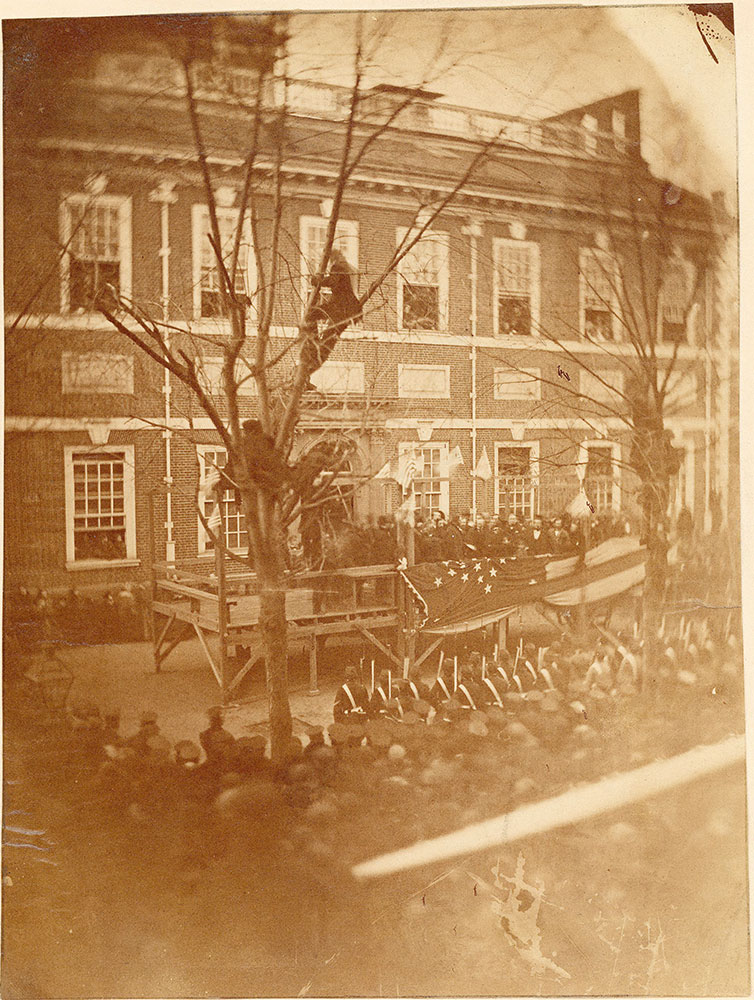
President elect Abraham Lincoln addresses a crowd outside of Independence Hall in 1861. (Free Library of Philadelphia)
Print of the Corn Exchange Regiment’s camp near the Fall of the Schuylkill in what is today Fairmount Park. Philadelphia had many camps like this throughout the city. (Library Company of Philadelphia)
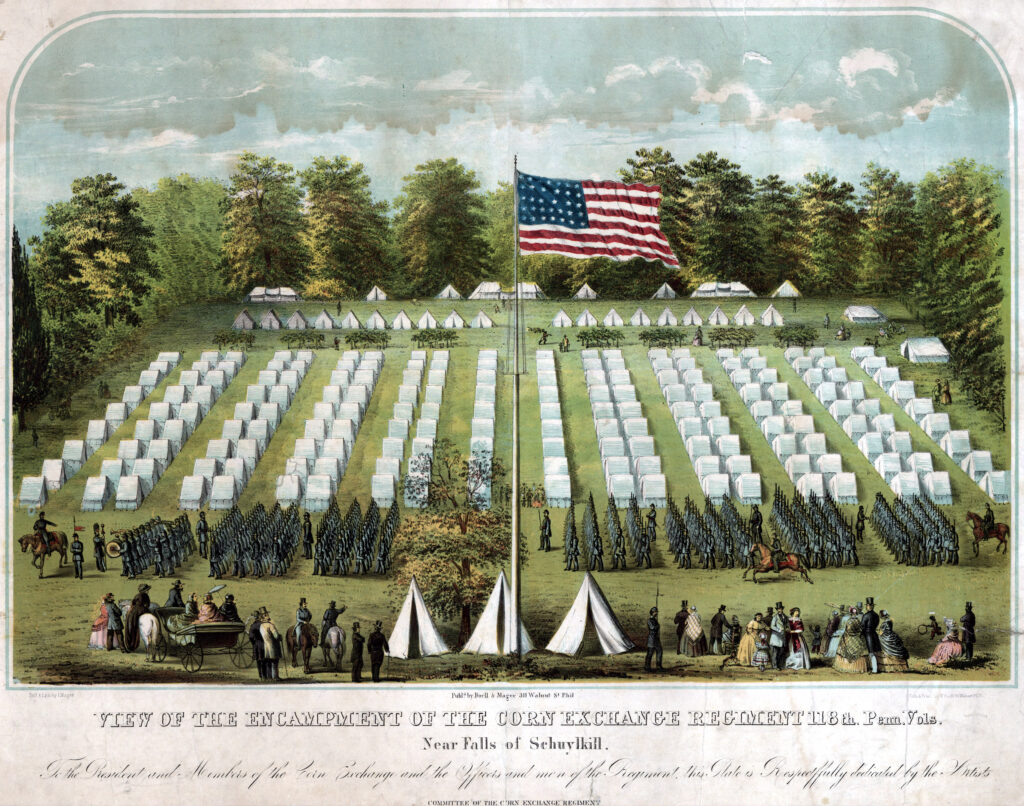
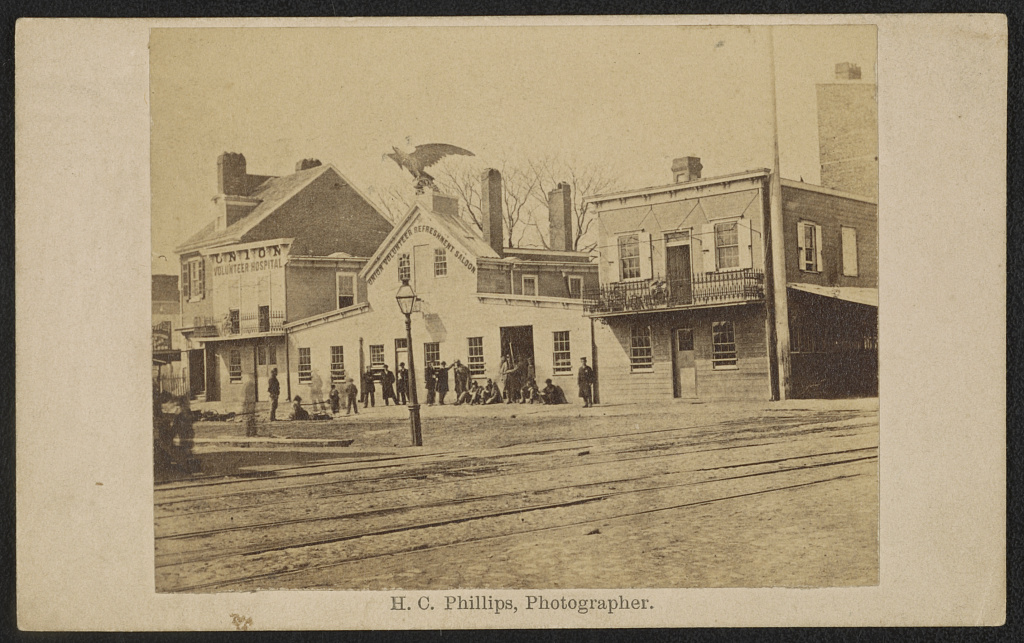
The celebrated Union Volunteer Refreshment Saloon in its early days in 1861. (Library of Congress)
The Union Volunteer Refreshment Saloon shown at an important crossroads. The Navy Yard and docks along the Delaware River to the left. Train tracks running along Washington Avenue. At bottom right is a fire company wagon, which volunteered during the war to take the sick and wounded to hospitals. (Library Company of Philadelphia)

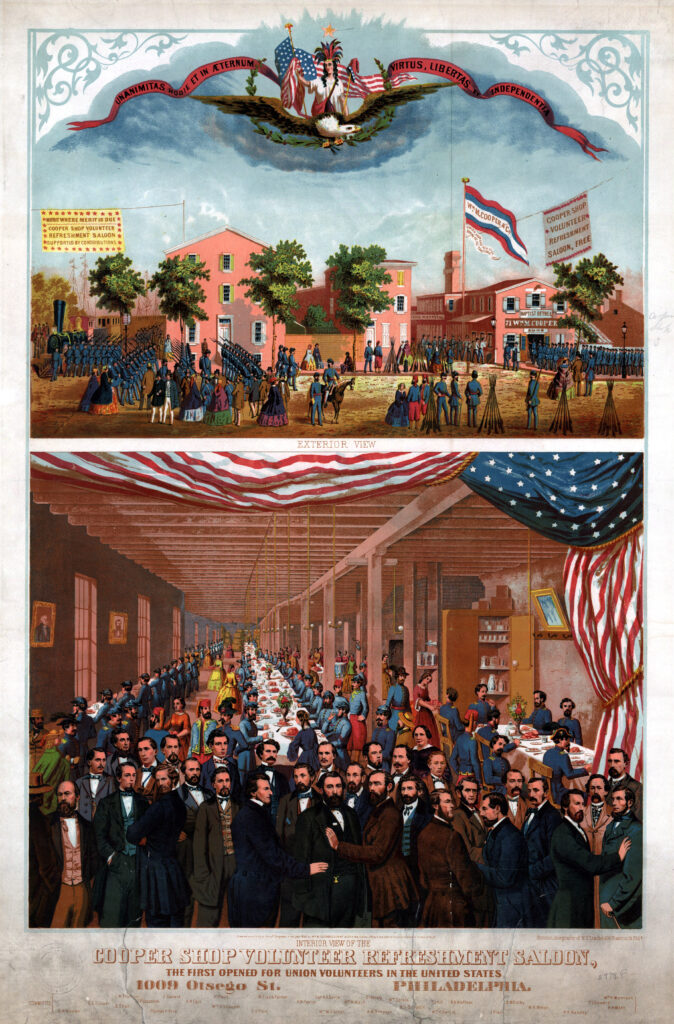
The nearby Cooper Shop Refreshment Saloon shown at full capacity. (Library Company of Philadelphia)
Anna Maria Ross served as nurse and “Lady Principal” of the Cooper Shop Volunteer Hospital. She wouldn’t live to see the end of the war, dying in 1863. Learn more. (Library of Congress)
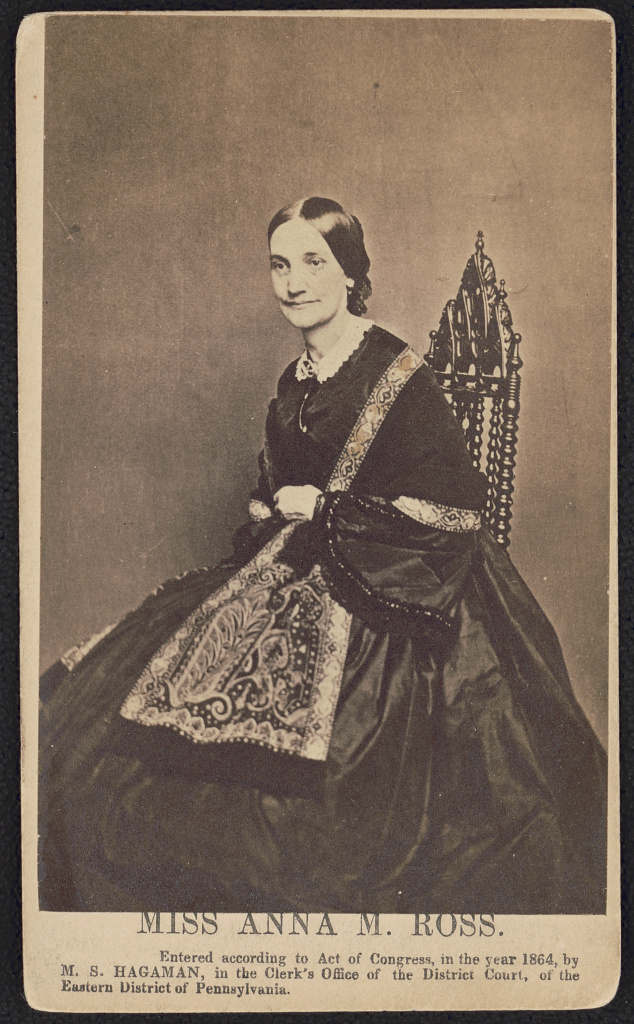
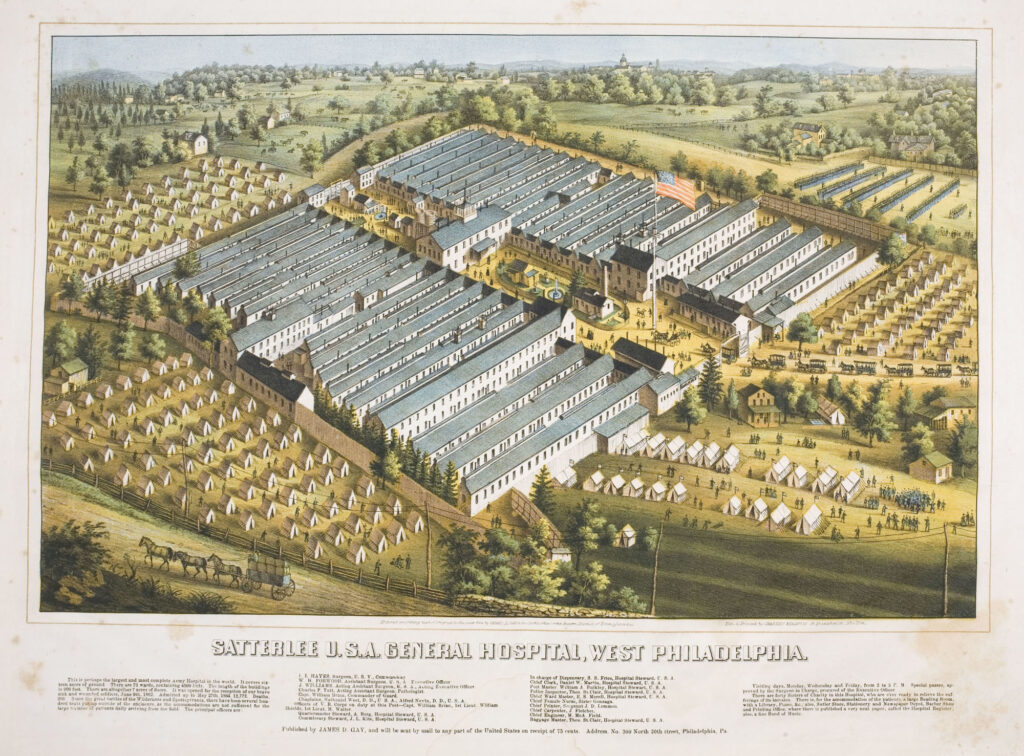
Aerial print of Satterlee USA General Hospital in West Philadelphia. As the war dragged on, Philadelphia was home to hospitals built on this incredible scale. These were among the largest in the nation. (Library Company of Philadelphia)
The 24th Regiment US Colored Troops training at Camp William Penn. This photo would have been taken January-March 1865 near the end of the war. (Library Company of Philadelphia)
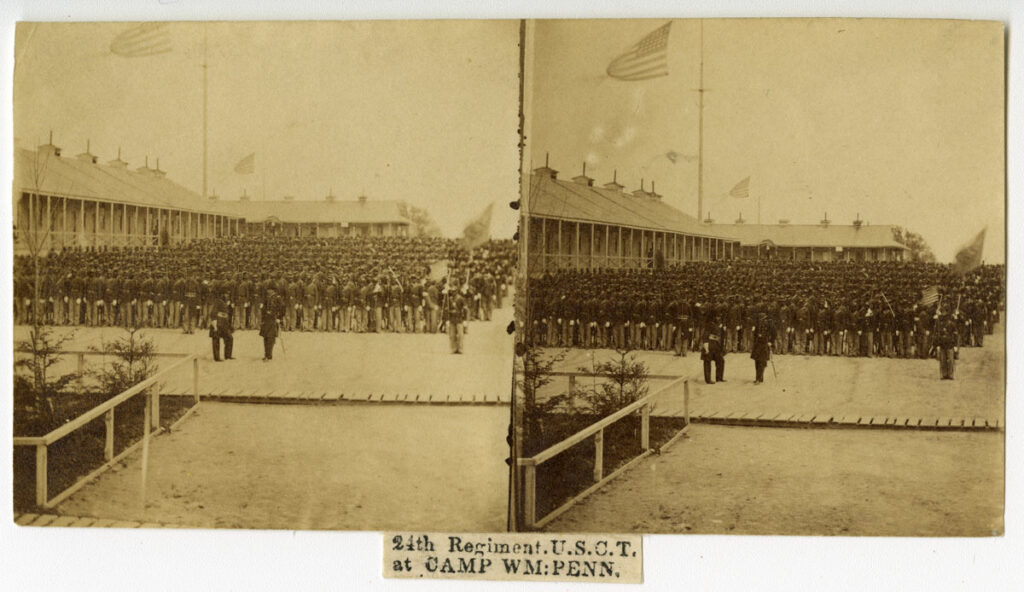
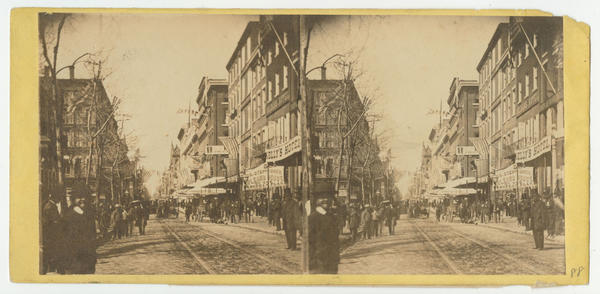
Chestnut Street from Independence Hall on April 1865. This stereoscopic image would have been taken on the day that the end of the war was announced in the newspaper. (Library Company of Philadelphia)
Philadelphia buildings wrapped in mourning along the procession route for Lincoln’s funeral in late April 1865. (Library Company of Philadelphia)
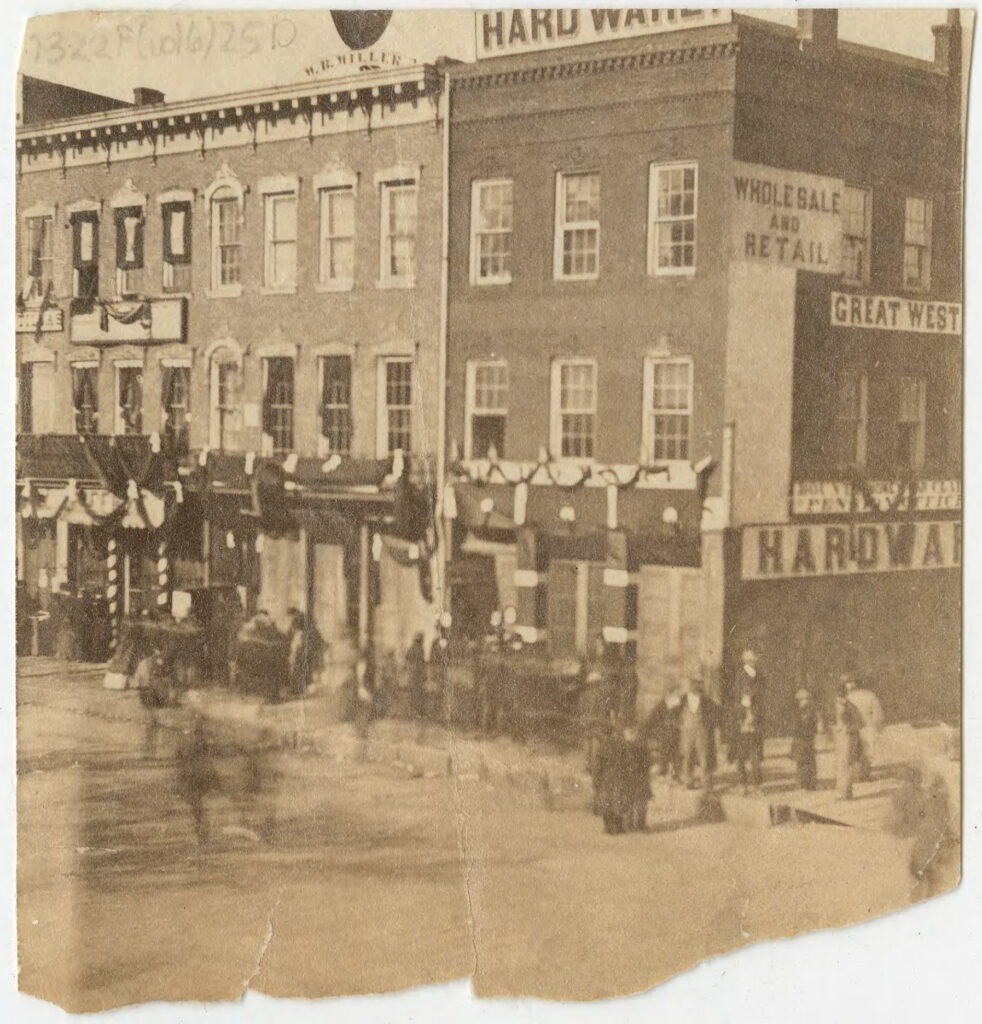
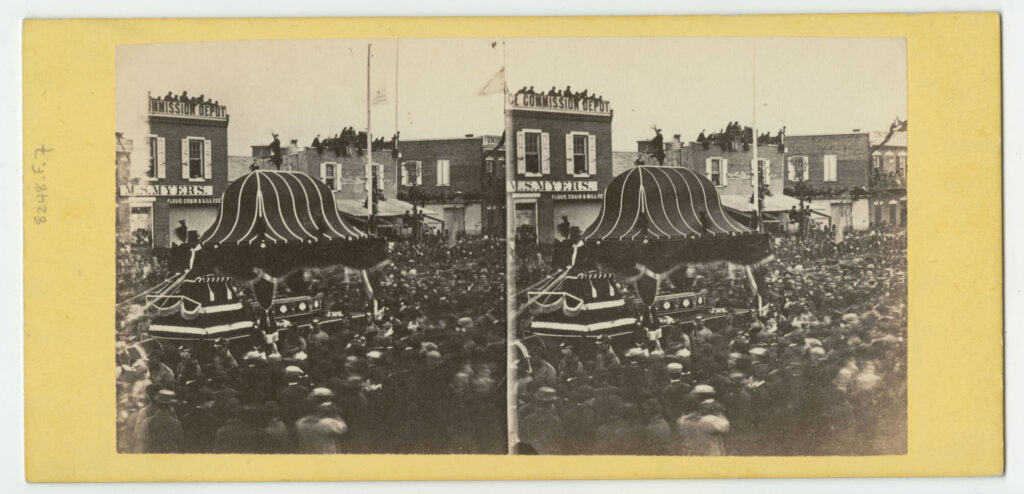
Stereoscopic image of the funeral procession for President Lincoln in Philadelphia in late April 1865. The decorated wagon at the center carries Lincoln’s body. Note the crowds of people on rooftops. (Library Company of Philadelphia)
Resources
Allinson, Edward P. and Boies Penrose. Philadelphia 1681-1887: a History of Municipal Development. Baltimore, Publication Agency of the Johns Hopkins University. Allen, Lane & Scott, 1887.
“Arrival at Philadelphia.” New York Times, April 25, 1865.
Biddle, Daniel R. and Murray Dubin. Tasting Freedom: Octavius Catto and the Battle for Equality in Civil War America. Philadelphia, PA: Temple University Press, 2010.
Binder, Frederick M. “Pennsylvania Negro Regiments in the Civil War.” The Journal of Negro History, vol. 37, no. 4, 1952, pp. 383–417. JSTOR, https://doi.org/10.2307/2715796. Accessed 7 Mar. 2023.
“Black Soldiers in the U.S. Military during the Civil War,” The National Archives, Educator Resources website. https://www.archives.gov/education/lessons/blacks-civil-war.
Daly, John, and Allen Weinberg. Genealogy of Philadelphia County Subdivisions. City of Philadelphia Department of Records: 1966.
Downs, Gregory P., and Kate Masur. “INTRODUCTION: Echoes of War: Rethinking Post–Civil War Governance and Politics.” The World the Civil War Made, edited by Gregory P. Downs and Kate Masur, University of North Carolina Press, 2015, pp. 1–21, http://www.jstor.org/stable/10.5149/9781469624198_downs.4.
Faulkner, Carol. Lucretia Mott’s Heresy: Abolition and Women’s Rights in Nineteenth-Century America. Philadelphia: University of Pennsylvania Press, 2011.
Fisher, Sidney. A Philadelphia Perspective : The Civil War Diary of Sidney George Fisher. Edited by Jonathan White. Fordham University Press, 2007.
Foner, Philip S. “The Battle to End Discrimination Against Negroes on Philadelphia Streetcars: (Part I) Background and the Beginning of the Battle.” Pennsylvania History: A Journal of Mid-Atlantic Studies, vol. 40, no. 3 (July 1973), pp. 261-290.
Foner, Philip S. “The Battle to End Discrimination Against Negroes on Philadelphia Streetcars: (Part II) Background and the Beginning of the Battle.” Pennsylvania History: A Journal of Mid-Atlantic Studies, vol. 40, no. 4 (October 1973), pp. 355-379.
Gallman, J. Matthew. Mastering Wartime: A Social History of Philadelphia During the Civil War. Philadelphia: University of Pennsylvania Press, 1990.
Giesberg, Judith. Army at Home: Women and the Civil War on the Northern Homefront. Chapel Hill, NC: The University of North Carolina Press, 2009.
Kahan, Michael. Pedestrian Matters: The Contested Meanings and Uses of Philadelphia’s Streets, 1850s-1920s. Dissertation. University of Pennsylvania. 2002.
MacKay, Winnifred K. “Philadelphia during the Civil War, 1861-1865.” The Pennsylvania Magazine of History and Biography, vol. 70, no. 1, 1946, pp. 3–51. JSTOR, http://www.jstor.org/stable/20087800. Accessed 7 Mar. 2023.
Military Order of The Loyal Legion Of The United States Pennsylvania Commandery, and Ya Pamphlet Collection. Samuel Bradford Fales. [Philadelphia ??, 1880] Pdf. Retrieved from the Library of Congress, <www.loc.gov/item/15005265/>.
Nash, Gary B. First City: Philadelphia and the Forging of Historical Memory, University of Pennsylvania Press, 2006, http://www.jstor.org/stable/j.ctt3fj3c5.4.
Philadelphia Inquirer, June-July 1863.
Scharf, J. Thomas. History of Philadelphia, 1609-1884. Michigan: L.H. Everts, 1884.
Sinha, Manisha. “Architects of Their Own Liberation: African Americans, Emancipation, and the Civil War.” OAH Magazine of History, vol. 27, no. 2, 2013, pp. 5–10. JSTOR, http://www.jstor.org/stable/23489715. Accessed 7 Mar. 2023.
Smedley, Samuel L. Atlas of the City of Philadelphia. Philadelphia: J.B. Lippincott, 1862.
Strangers Guide in Philadelphia. Philadelphia: Lindsay & Blakiston, 1861.
Tallack, William. Friendly Sketches in America. London: A.W. Bennett, 1861.
Taylor, Frank H. Philadelphia in the Civil War, 1861-1865. Philadelphia: University of Pennsylvania, 1913.
Tremel, Andrew T. “The Union League, Black Leaders, and the Recruitment of Philadelphia’s African American Civil War Regiments.” Pennsylvania History: A Journal of Mid-Atlantic Studies, vol. 80, no. 1, 2013, pp. 13–36. JSTOR, https://doi.org/10.5325/pennhistory.80.1.0013. Accessed 6 Mar. 2023.
